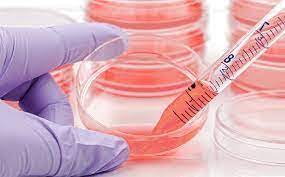 If you’ve been diagnosed with arthritis, you might be wondering how to treat your condition. Although your doctor may prescribe pain medication, such as nonsteroidal anti-inflammatory drugs (NSAIDs) or disease-modifying antirheumatic drugs (DMARDs), there are also alternative methods to help reduce inflammation and pain. Antibiotics and antivirals are common treatments for arthritis-related joint pain, while physical therapy and surgery may be recommended for joint pain caused by other causes. Get the facts about regenerative medicine Ponte Vedra Beach you can try this out.
If you’ve been diagnosed with arthritis, you might be wondering how to treat your condition. Although your doctor may prescribe pain medication, such as nonsteroidal anti-inflammatory drugs (NSAIDs) or disease-modifying antirheumatic drugs (DMARDs), there are also alternative methods to help reduce inflammation and pain. Antibiotics and antivirals are common treatments for arthritis-related joint pain, while physical therapy and surgery may be recommended for joint pain caused by other causes. Get the facts about regenerative medicine Ponte Vedra Beach you can try this out.
Firstly, see your doctor as early as possible. Joint pain can be caused by a number of different things, including overuse, injury, and underlying conditions. You should seek advice from a joint specialist if you notice persistent or unexplained pain in any joint. Joint pain treatment advice should be tailored to the underlying condition to avoid long-term complications. A doctor will be able to diagnose and recommend a suitable treatment plan based on your symptoms and medical history.
The doctor will ask you several questions about your symptoms and assess your overall health. By asking these questions, they can narrow down the possible causes of your joint pain. They may recommend a joint X-ray to see if there are any signs of arthritis or other conditions that may be contributing to your pain. Blood tests will also reveal whether you have a condition known as gout or an infection, or they may suggest you undergo surgery to replace the joint.
In addition to taking anti-inflammatory drugs, you can also take supplements such as glucosamine or chondroitin sulfate. Taking dietary supplements or omega-3 fatty acids, as well as drinking green tea, can help reduce inflammation and relieve joint pain. There are many other treatment options available, but before you try something new, talk to your doctor. Make sure to understand how these treatments can interact with medications you’re taking.
While it’s tempting to rest your joints, these activities can lead to more damage and discomfort. Aside from exercise, ice packs and paracetamol can help you start exercising again after your arthritis symptoms have subsided. A good way to improve your joint health is to take regular walks. Even small, everyday activities such as going for a brisk walk will boost your mood and improve your cardiovascular condition. When the joint is painful, you should avoid sitting down for long periods of time.
Nonsteroidal anti-inflammatory drugs (NSAIDs) are common treatments for arthritis, although they do not treat the underlying condition. NSAIDs are available over the counter in creams, gels, and patches. While they work well on your knees, they may not work as well on your hips, which are much deeper under your skin. Talk to your doctor before you start taking any type of pain killer. A combination of medication may be necessary.
Other options for treating joint pain include acupuncture and heat therapy. Acupuncture uses hair-thin needles to target specific points in the body, and is an alternative treatment for arthritis. However, it can take several weeks to work. Moreover, heat may help relieve the pain, but you should be careful not to burn yourself! For a better result, you can use heating pads or wraps instead of ice.
CONTACT INFO
QC Kinetix (Ponte Vedra)
820 A1A N, Suite E9
Ponte Vedra Beach, FL 32082
(904) 274-5522
